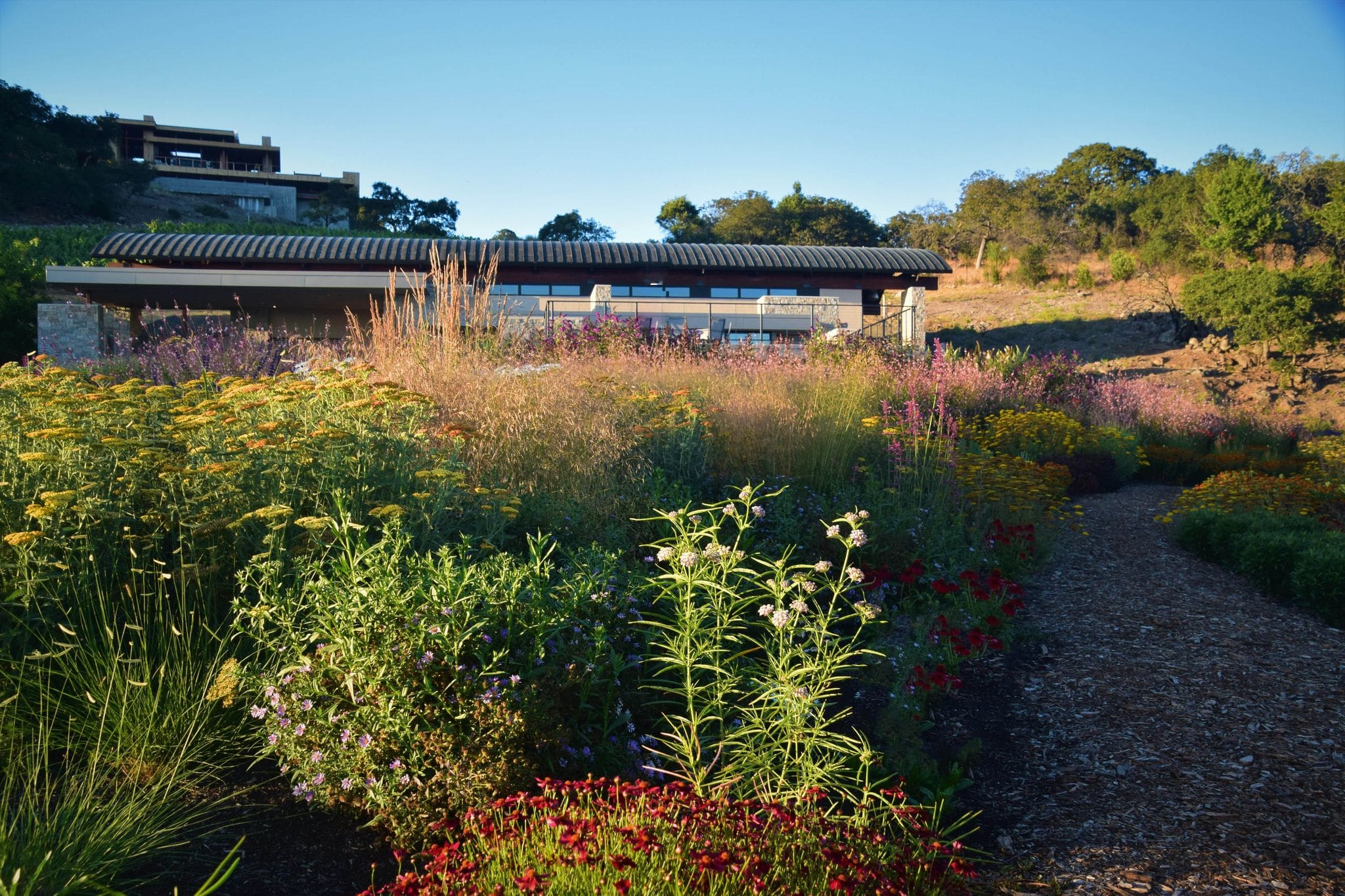Tucked along the western edge of Sonoma County is one of wine country’s best-kept secrets. Coursey Graves Winery sits high atop the Bennett Valley, where cool temperatures and rocky soil are reminiscent of France’s Bordeaux region. When it came time for the owners to manifest their vineyard home, the Minnesota natives asked architect Charles Stinson to create a fluent exchange between the complex geography and the architecture sitting upon it.
Stinson first visited the site in 2015, marveling at the geometry of the vineyard, a nearby pond, and the bluffs and hills surrounding it all. He sketched a floor plan using his preferred medium of colored pencil to provide initial concepts. “A vineyard is soft but bold, so the structures needed to be that way, too,” he explains. He drew forms flying out over the property that ultimately became soaring decks off the house overlooking the very heart of the vineyard — extending from a home existing in pure harmony with nature.
Stinson has had a hand in everything from the architecture to the landscaping to even the winery branding. Inspired by his initial sketch, the owners asked him to transform it into a wine label that elevates the Coursey Graves story. “It’s the soaring architecture and the sun working together in a simplified language,” he shares of the label design.
Co-owner and winemaker Cabell Coursey echoes that the Coursey Graves story starts with sun: “Sunlight isn’t talked about as much as soil,” he says, “but I believe it’s what makes wine unique. Making wine is essentially translating sunlight.” He’s an expert at cultivating the best fruit from the climate, where within a three-minute drive through the vineyard the elevation changes by 1,000 feet and the temperature can swing 30 degrees. “The combination of our cooler temperatures makes our wine elegant and pure,” he adds. “It tastes like fresh fruit, which you don’t get in hotter regions.”
Cabernet, merlot and syrah climb three hills, mirroring Stinson’s vision of a village-like trifecta of structures: the barn down below, the winery at the center and the house above with a commanding view of it all. He tapped prominent Marin County builder Jeff Jungsten to ensure all three read as one language. “Charles’s and the owners’ collaborative spirits inspired such a value-oriented project,” notes Jungsten. Collaboration was key, as what started as a singular floor plan evolved into an endeavor to make every building on the property feel cohesive.
The team used naturally occurring stone and oak as primary materials in addition to the winery’s principal element: sunlight. “Charles thinks of light as a building material,” Jungsten explains. “When you pay attention to that type of detail, the finished result is magic.”
Each level of the home — which is scheduled for completion next spring — cascades to the next with strong lines that mimic the surrounding geography. The carport was specifically designed so as not to interrupt any sightlines. Inside the residence, large expanses of glass frame the panoramic valley vistas and let natural light pour in. Even in hallways, panes of glass nearly reach the ceilings, allowing for natural light in places most people wouldn’t think to optimize. Cool, light-colored plaster, meanwhile, offsets the warmth radiating from the sun-soaked interiors. “There’s a very earthy feel,” Jungsten shares.
The family’s private spaces sit on the west side of the abode, with entertaining amenities on the other. Sliding glass doors lead to the soaring decks where an exterior kitchen, barbecue area, infinity pool and fire pit boast eastward-facing views of Bennett Valley. “The sky, the hills, the architecture — it’s all a sculpture,” says Stinson of this unique property.



